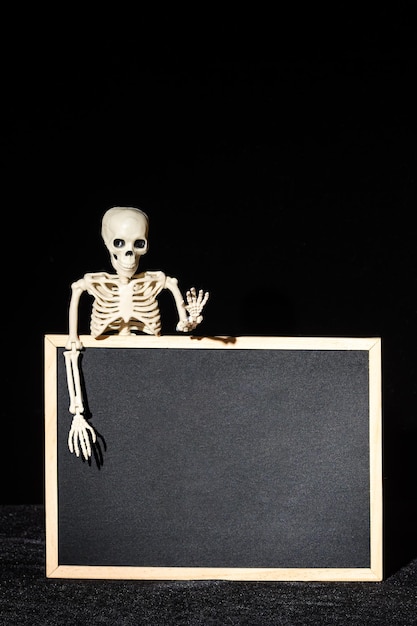Skeleton Facts – Discover Everything About our Inner Support System

The human skeleton is made up of 206 individual bones.
The smallest bone in the human body is called the stapes and is located in the ear.
The longest bone in the human body is the femur, which is found in the thigh.
The skull protects the brain and is made up of 22 bones.
The spine is made up of 33 individual vertebrae.
Bones are living tissue and can repair themselves if they get damaged.
The human skeleton provides structure and support for the body.
Bones also play a role in storing minerals such as calcium and phosphorus.
The clavicle, or collarbone, is the only bone in the body that does not directly articulate with another bone.
The human skeleton is divided into two main parts: the axial skeleton and the appendicular skeleton.
The ribcage protects the heart and lungs.
Babies are born with around 300 bones, but as they grow, some of these bones fuse together.
The hyoid bone in the throat is the only bone in the human body that does not connect to any other bones.
The bones in the hands and feet account for over half of the bones in the human body.
Osteoporosis is a condition that causes bones to become weak and brittle.
The patella, or kneecap, is the largest sesamoid bone in the body.
The human skeleton is made up of different types of bones, including long bones, short bones, flat bones, and irregular bones.
Ribs are attached to the spine at the back and curve around to connect with the sternum at the front.
Skeleton Facts – Discover Everything About our Inner Support System part 2
The bones in our body are constantly being remodeled by cells called osteoblasts and osteoclasts.
The human hand has 27 bones, including 8 carpal bones, 5 metacarpal bones, and 14 phalanges.
The bones in the human body provide a framework that allows us to move and perform various activities.
Bones also play a role in hematopoiesis, which is the production of new blood cells.
The spinal cord runs through a hollow space called the vertebral canal, which is formed by the vertebrae.
The human skull is made up of cranial bones and facial bones.
The coccyx, or tailbone, is the remnant of a tail that our distant ancestors had.
Bones can vary in size, shape, and density depending on the individual’s age, gender, and genetic factors.
The human skeleton provides attachment points for muscles, tendons, and ligaments.
The bones in our body are constantly remodeling and adapting to changes in our activity levels and lifestyle.
Bones are composed of collagen, a protein, and minerals such as calcium and phosphorus.
The bony structure of the skeleton also helps to protect vital organs such as the heart, lungs, and brain.
The bones in our body are constantly being broken down and rebuilt in a process called bone remodeling.
The human skeleton provides a storage site for fat, which can be used as an energy source.
The human skeleton is incredibly strong and durable, able to withstand significant forces and impacts.
The different types of joints in the body allow for various movements, such as bending, twisting, and rotating.
The skeleton of a newborn baby is mostly made up of cartilage, which gradually ossifies and turns into bone.
Bones can communicate with other body systems through cell signaling and hormonal pathways.
The human skeleton provides a frame for the body, allowing us to maintain an upright posture.
The structure of our bones is essential for maintaining balance and stability.
Bones have a unique ability to heal themselves, with fractures being repaired through a process called bone remodeling.
The skeleton also plays a role in protecting delicate organs, such as the spinal cord and organs in the chest cavity.
Bone marrow is found inside certain bones and is responsible for the production of red and white blood cells.
The human skeleton undergoes changes throughout life, with bones becoming denser and stronger during childhood and adolescence.
The strength and density of our bones can be influenced by factors such as diet, exercise, and hormonal balance.
The human skeleton is a complex and intricate system, with each bone having a specific shape and function.
Our skeletal system is an incredible testament to the marvels of human anatomy and physiology.

